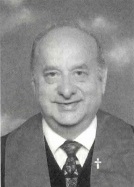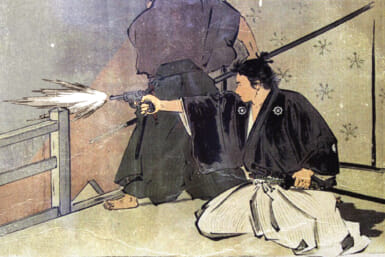Lots of things go with Easter: colored eggs, baby chicks, bunny rabbits, Easter parades, a new outfit and bonnets. But Sweet P’s? What’s that? Hang on and let’s find out.
The first “P” is for “Pas.” Let’s rewind to 1951. I just came to Japan as a 22-year-old missionary. I studied 11 hours a day with three Japanese language teachers who got ¥35 an hour. Eat your hearts out, you who now must spend ¥3,000 to ¥4,000 an hour learning this language.
After eight months of intensive study, we could preach an hour-long sermon in Japanese. Being a traveling evangelist, I could preach the same one every night in a different city. I traveled with an interpreter in a motor home.
Being a bachelor, I traveled for seven months, never coming home. In the afternoon we had children’s meetings and every night a meeting for adults.
I began to feel tired, burned out. A check-up at a Niigata hospital revealed I had tuberculosis in the left lung. So, the 135-pound weakling was put to complete bed rest. “You’ll never travel again,” the doctor said. “If you live, you must have a quiet, normal life.” Then, out of the blue, came a new medicine invented by Jonas Salk called “Pas,” a miracle drug for t.b. and I was cured to travel and preach again the crucified and risen Christ. That was probably 10,000 meetings ago.
The second “P” stands for Passover. Today we celebrate not only the risen Christ of the New Testament, but also the Passover of the Old Testament which foretold the coming of Jesus. The death angel was visiting the homes of all the Hebrew children. But if he saw the blood of the lamb sprinkled on the doorpost of the house, the death angel would not come and kill the first-born, but would pass over that house.
So in the true Judeo-Christian context, the seven-day Passover Jewish holiday is held around the time of Easter. The Passover meal—one of the high holy feasts of Judaism—means they also celebrate their deliverance from the bondage in Egypt when they had to be ready to flee at a moment’s notice. Thus they eat the Passover meal standing up, fully clothed. They didn’t have time to make delicious bread, but it was simply an unleavened “Matzo” or unsalted bread.
The third “P” stands for “Pascal” which means the Sacrificial Lamb the Passover alluded to. It had to be the blood of a pure, unblemished lamb, pointing prophecy to John the Baptist who saw Jesus coming and cried out, “Behold, the Lamb of God which taketh away the sin of the world.”
In fact, Easter is not the real name for this holiday about the resurrected Christ. The early church 2,000 years ago and the Ancient Assyrian Church of the East (Keikyo), the “world’s greatest missionary movement,” featured the “Pascal Lamb” Who died and rose again. Jesus did not stay dead. He rose again and this is the pivotal point, the hinge of all history.
Recently, at my fully illustrated lecture sponsored by the Tokyo American Club’s Culture Committee, we celebrated the 1,800th anniversary of the first Christian missionaries coming to Japan in 198 AD, before Shintoism and Buddhsim were formally organized. We also memorialized the 400th anniversary of Japan’s holocaust in which up to 1,300,000 Japanese Christians were massacred before America’s founding. Why were they willing to die? Because they believed in the cross and the resurrection. You don’t willingly die for a lie.
The fourth “P” is “Peace” with God through the Pascal Lamb Jesus Christ. He made it possible for an almighty, holy God to pass over all our foul sins that we have committed. The peace of God we can only receive after we have the assurance that our sins have been blotted out by the Pascal Lamb’s sacrificed blood on the cross of Calvary.
‘ There are three “R’s” of the Easter crosses. We shouldn’t call it “Good Friday.” It’s really “Black Friday.” The day Jesus the Messiah, the anointed Passover Lamb of God, was on the middle cross dying not for his sin, but for ours. That’s the cross of redemption. On the left and right were the crosses of rejection and reception. The sinner on the left spit at Jesus and cursed, “If you are the Messianic great Son of God, come down from that cross and save yourself and then talk about saving me!” He rejected the Redeemer and clawed and climbed his way over the love of God to fall into eternal hell.
The sinner on the right, though just as guilty, in his last five minutes became the receptive one. He looked at the crucified Christ and said, “Please remember me (save me) when you come into Heaven!”
Jesus said, “He that hears my Word and believes on Him that sent me has everlasting life and shall not come into condemnation, but is passed from death to life.” “For God so loved the world that He gave His only begotten son to die on the cross that whosoever believeth in Him should not perish, but have everlasting life.” “He that believeth not is condemned already for he has not believed on the Son of God, Jesus.”
On the left we have turmoil, rebellion, arrogance, sin and hell. On the right was humility, reception and peace. The “Prince of Peace” today stands with arms outstretched, saying, “Come unto me all of you who are burdened and heavy laden and I will give you rest and peace.”
Reach out your hand in faith and take His hand and say, “I believe; help my unbelief.”









